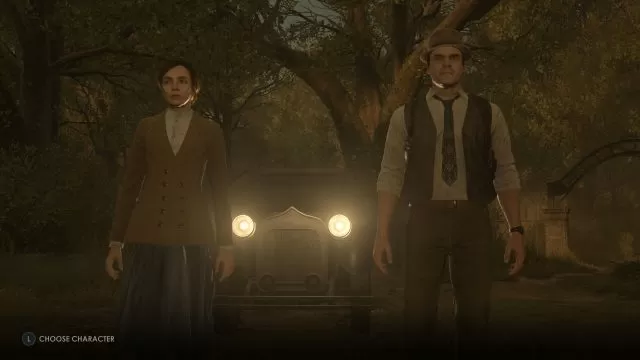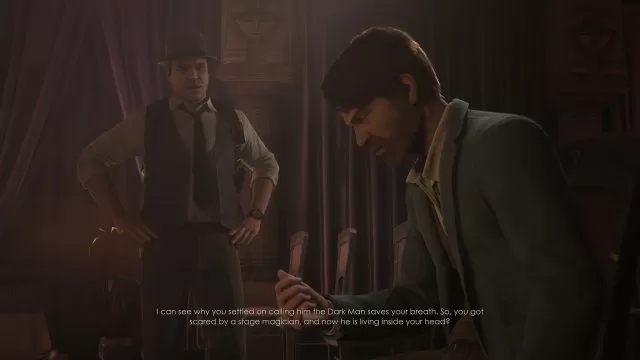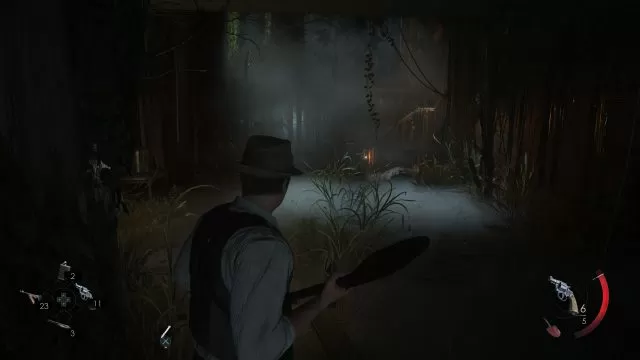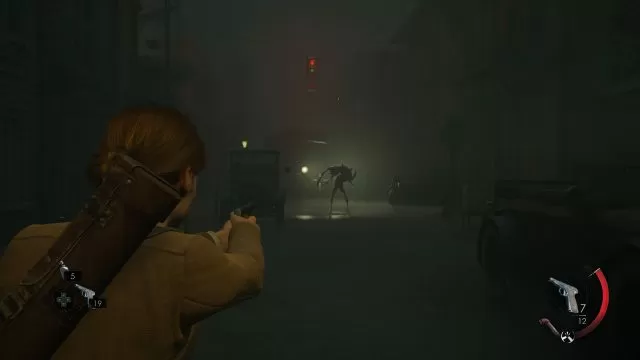Alone in the Dark Review – Southern Discomfort
Guinness World Records Gamer’s Edition states that Alone in the Dark from 1992 was the “first-ever 3D survival horror game”. Those sweet summer children forgot about 3D Monster Maze, the most frightening game of 1981, but that is to be expected after this many decades. The bigger question about Alone in the Dark is why the heck it never managed to take off. Compared to all the Residents Evils and Silent Hill sequels from the past decades, all subsequent AitD games tanked more than tank controls of old. Poltergeist curse, bad luck, or flawed selection of development teams? Someone should probably do a Ph.D. dissertation about it.
THQ Nordic, never stranger to interactive archeological necromancy, decided to give it another shot. There’s enough collective remembrance and nostalgia that justifies making the modern sequel. With this fresh Alone in the Dark, they didn’t try to reinvent the wheel. Instead, they went with a tried and tested approach virtually identical to last year’s Resident Evil 4 remake. Creating a classic survival horror experience, rich in puzzles and combat and presented in an over-the-shoulder third-person format won’t get them many accolades for innovation, but considering that stupid experiments ruined all previous attempts to resuscitate Alone in the Dark, a conservative approach makes more sense.
One and a half story with optional extra endings

This time around, the developer brought heavy artillery into the mix. Jodie Comer (Killing Eve, Free Guy) and David Harbour (Stranger Things, Black Widow) are Emily Hartwood and Edward Carnby. Mr. Carnby is a private investigator from New Orleans, hired by Mrs. Hartwood to find her missing uncle Jeremy. The poor uncle, suffering from psychological trauma, was seeking solace in Derceto, an asylum for “mentally fatigued”. Said facility is situated outside civilization, right in the middle of the massive bayou in Louisiana, a locale traditionally associated with cults, crazy, and inbreeding.
In the beginning, you are presented with a choice of protagonist. By playing as Edward or Emily you will reach the same ending, but the path, especially in the later part of the game, will differ. The game also has a secret ending(s), accessible after you finish the story with both characters and complete a certain number of memorabilia sets. Not the most elegant solution due to the massive overlap of content, but certainly better than nothing. This “motivational trichotomy” extends the length of the available material, which sits between six and nine hours, depending mostly on your puzzle-solving skills. It’s objectively not much, especially for the players interested only in a singular pass through the game.
Competent cast and a compelling story

Fortunately, the story is more than simply “good”. It’s far more mature compared to any Resident Evil in existence, dealing with layered horror that’s both existential and supernatural. The guy who wrote SOMA was responsible for the literary aspect of Alone in the Dark, and he did a marvelous job. To get a full grasp of the unholy mess Jeremy involved himself with, you will need both playthroughs, as just one will leave a few gaping holes. Adventuring through the real world and Jeremy’s psychological constructs will drive you to the edge of madness, and the escalation of crazy will make you wonder about the mental health of the protagonist. The superb acting from the main and supporting cast binds all the various strands together, distilling the finest narrative of all Alone in the Dark games to date.
Puzzles and combat provide sobering escapism from all that heaviness. Some puzzles are a whole order of magnitude more challenging than most devious ones from Resident Evil and other equivalents. Expect to headbang the wall often, and trawl through documents for clues. The game allows you to modify the level of challenge in most aspects related to riddles and navigation. You can choose a modern or traditional guidance preset or make a custom selection regarding map markers, clue highlights, and various hints. But not even then you can expect a walk in the park.
The Callisto Protocol flashback

Due to several detriments, combat is the weakest part of the entire experience. First of all, the movement system is anything but fluid. Edward and Emily feel more like wooden automatons than real people, stumbling around awkwardly and occasionally getting stuck into the environment. Expect to flail helplessly when surrounded by several foes, who will often stunlock and make short work of you. The closest modern parallel with the unwieldiness of close combat here is The Callisto Protocol. Not a flattering comparison, this.
To prevail, you need to learn your limits (and the limits of the game engine), always maintaining a respectable distance from any foe. That fact alone makes the melee weapons obsolete from the start. But firearms, including revolver, shotgun, and Tommy gun are better solution anyway. The game dynamically makes sure you’ll always have enough ammo, even if you spend it semi-recklessly.
Another poor aspect of combat is the bland monotony of enemies. There are only a couple of variants of foes, but you’ll mostly face weird shadowy humanoids that look like the hatechild of Swamp Thing and Zombie. They will always rush headlong at you, and you will always aim for the head. Simplicity 101. Last but not least, the final boss of both “normal” playthroughs is probably the lamest end-game fight in any modern survival horror.
All good things

Alone in the Dark is not perfect, but since the crop of AAA survival horror games is severely limited, we can give a royal pardon to some of its antics. Clumsy combat and a limited variety of foes are secondary to the experience. The things that’ll stick with you are the story and the characters, and those ooze ZING in abundance.
Highs
- Exceptional story and a superb choice of actors.
- Plenty of clever, often very challenging puzzles.
- Lots of secrets to unpack and lore to unveil in subsequent playthroughs.
Lows
- Stiff movement and bellow-average combat system.
- Probably the lamest end-boss fight in the history of modern survival horrors.

